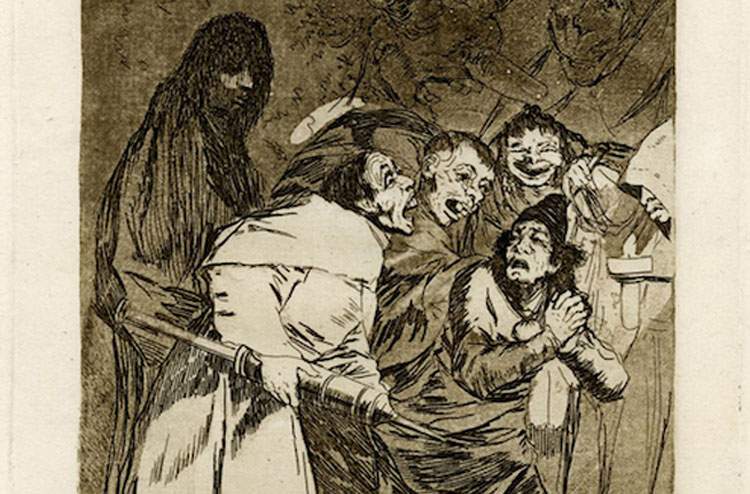For the first time it will come to Italy, after Madrid, Bordeaux, Algiers and Prague, the exhibition Goya Fisonomista. The Face of Goya’s Graphic Work, which will be on display in the Sala Dalí of theInstituto Cervantes in Rome from April 29 to September 18, 2021.
Curated by Juan Bordes and organized by the Instituto Cervantes and the Real Academia de Bellas Artes de San Fernando, the exhibition brings together thirty-eight etchings by Francisco Goya (Fuendetodos, 1746 - Bordeaux, 1828) belonging to three of his famous series: Los Caprichos (twenty-nine etchings), Los Disparates (five etchings) and Los Desastres (four etchings). This selection of engravings analyzing the relationship of Goya’s faces to the physiognomic treatises of the time will be flanked by no less than 109 reproductions of 18th- and 19th-century illustrations and a video.
Particularly expressive faces, which are representations of the collective unconscious of the artist’s time, can be seen in the works in the exhibition. Faces that speak directly to the people, the main recipients of the message of these works.
Opened for the first time in Madrid in June 2018, at the Calcografía Nacional, the exhibition aims to present the most brutal, emotional and singular aspect of the Aragonese painter and engraver. The relationship between the most significant faces of his characters and the physiognomic theories published between the 18th and 19th centuries is analyzed, and Goya’s interest in physiognomy is also revealed, partly originating from his trip to Italy, where reprints by Giovanni Battista della Porta were popular at a time when science was studying the reflection of mental illness in people’s faces.
To demonstrate Goya’s connection to these theories, parallels are highlighted between a selection of lithographs from the artist’s major series (along with photographic enlargements of his characters’ faces) and Le Brun’s large physiognomic albums or Moreau de la Sarthe’s encyclopedia (1806-1809). Goya’s sources thus become evident, with an installation that compares the various works, showing three types of physiognomies: the animal, the pathological and the degraded.
The exhibition can be visited free of charge Tuesday through Saturday from 4 to 8 p.m., by appointment (by sending an e-mail to cenrom@cervantes.es or calling 0685373628/29.
Image: Francisco Goya, Trágala perro(Caprichos 58)
 |
| For the first time in Italy, an exhibition investigates Goya's relationship with physiognomy |
Warning: the translation into English of the original Italian article was created using automatic tools. We undertake to review all articles, but we do not guarantee the total absence of inaccuracies in the translation due to the program. You can find the original by clicking on the ITA button. If you find any mistake,please contact us.